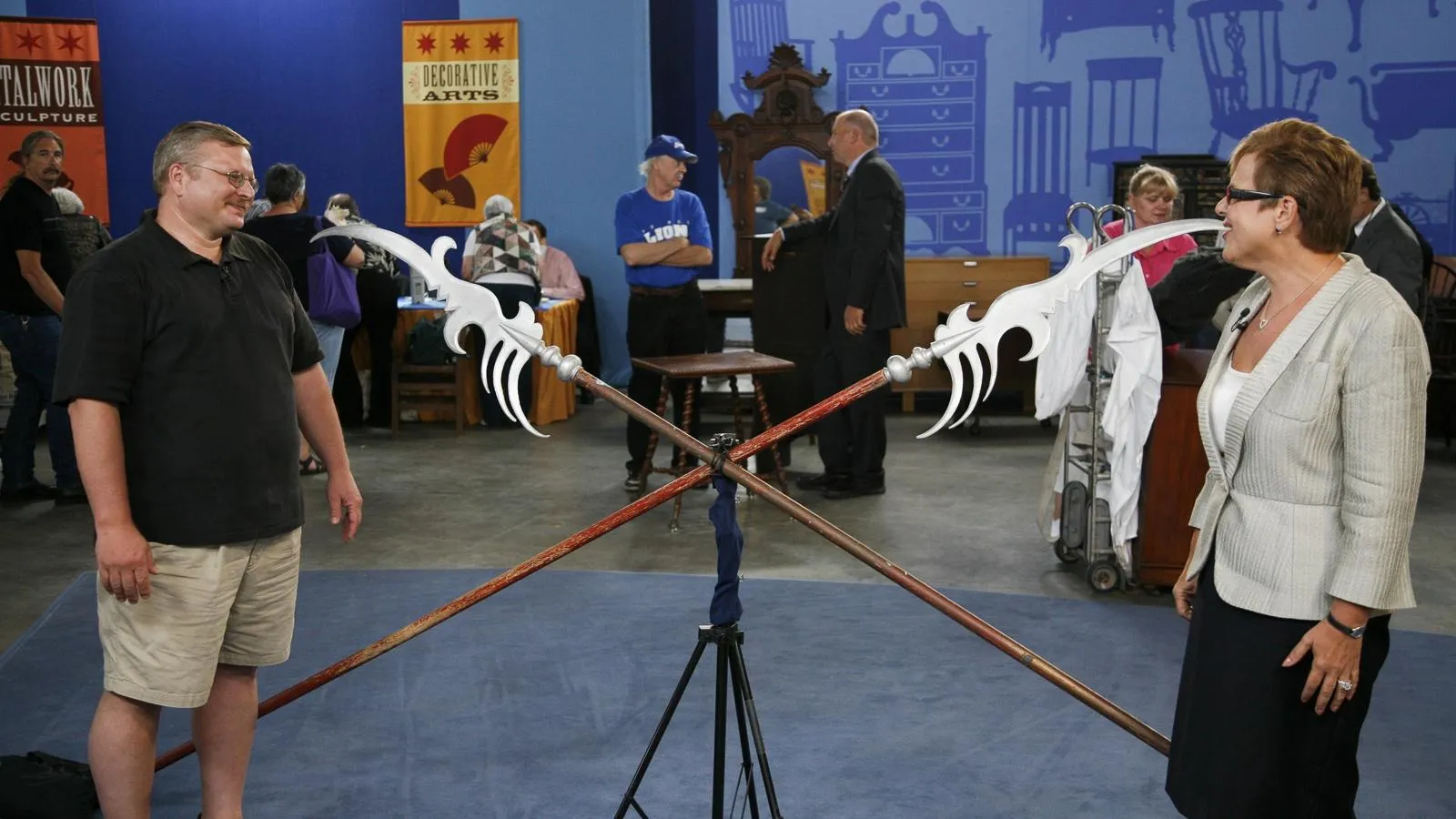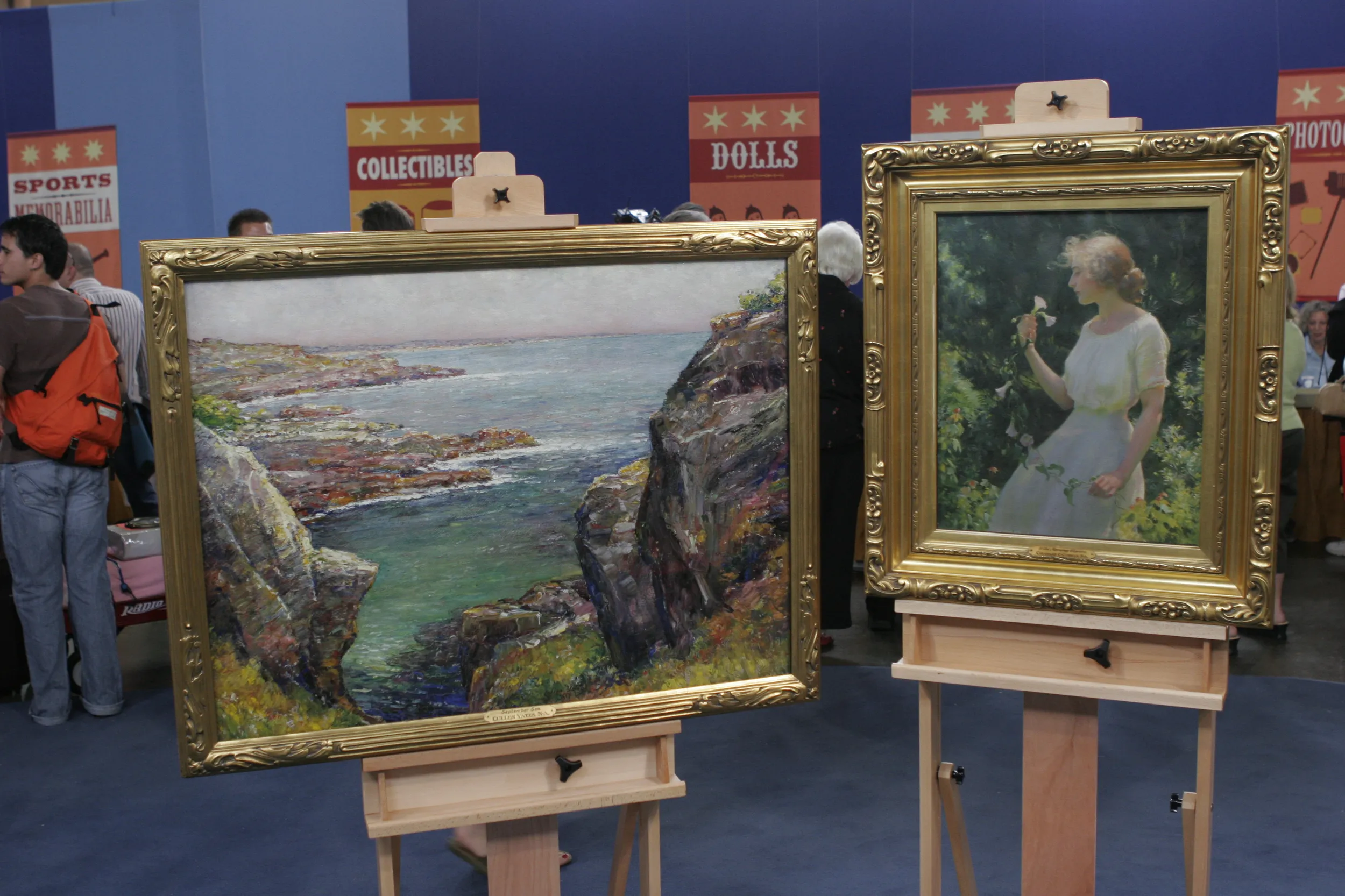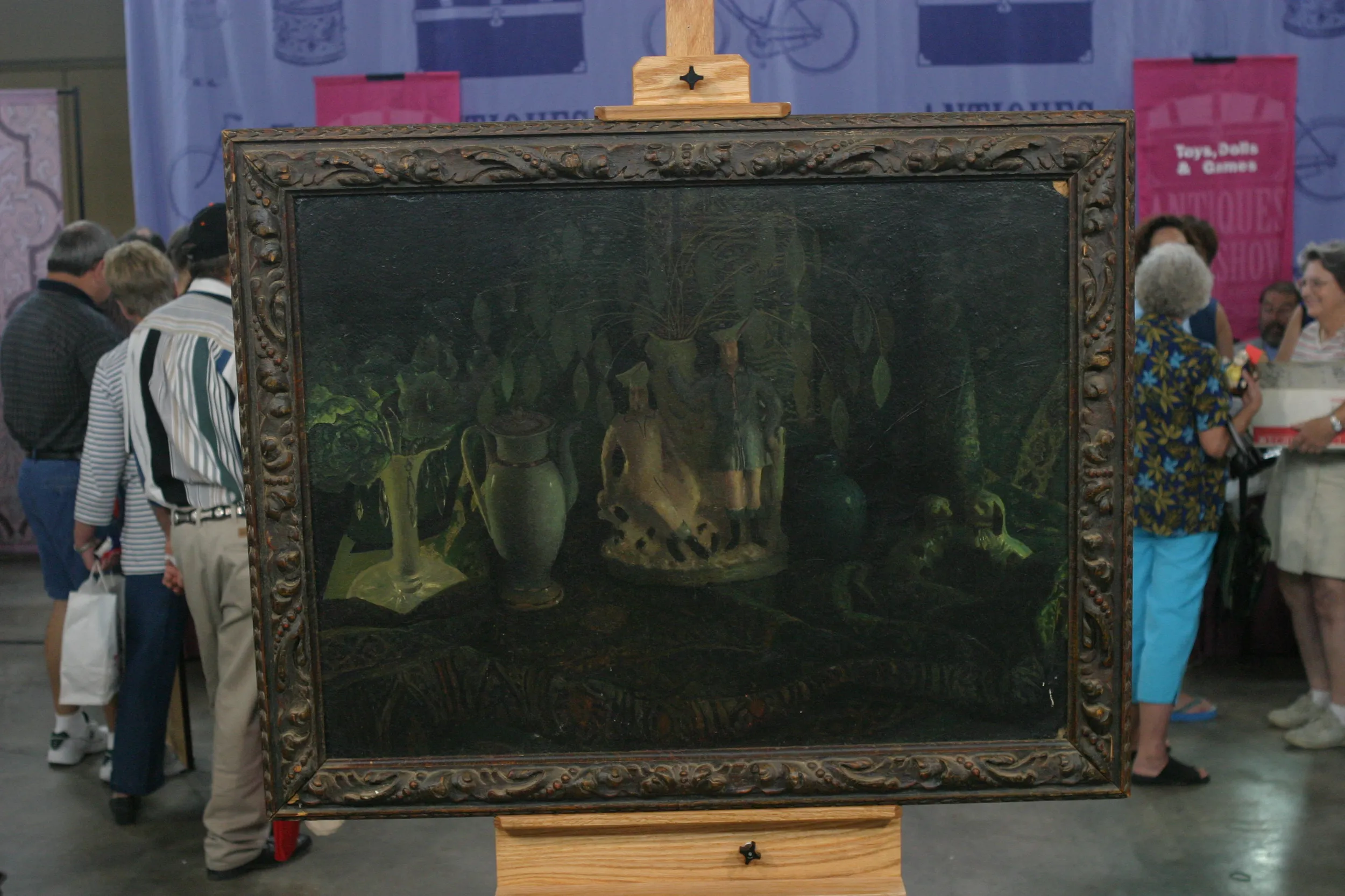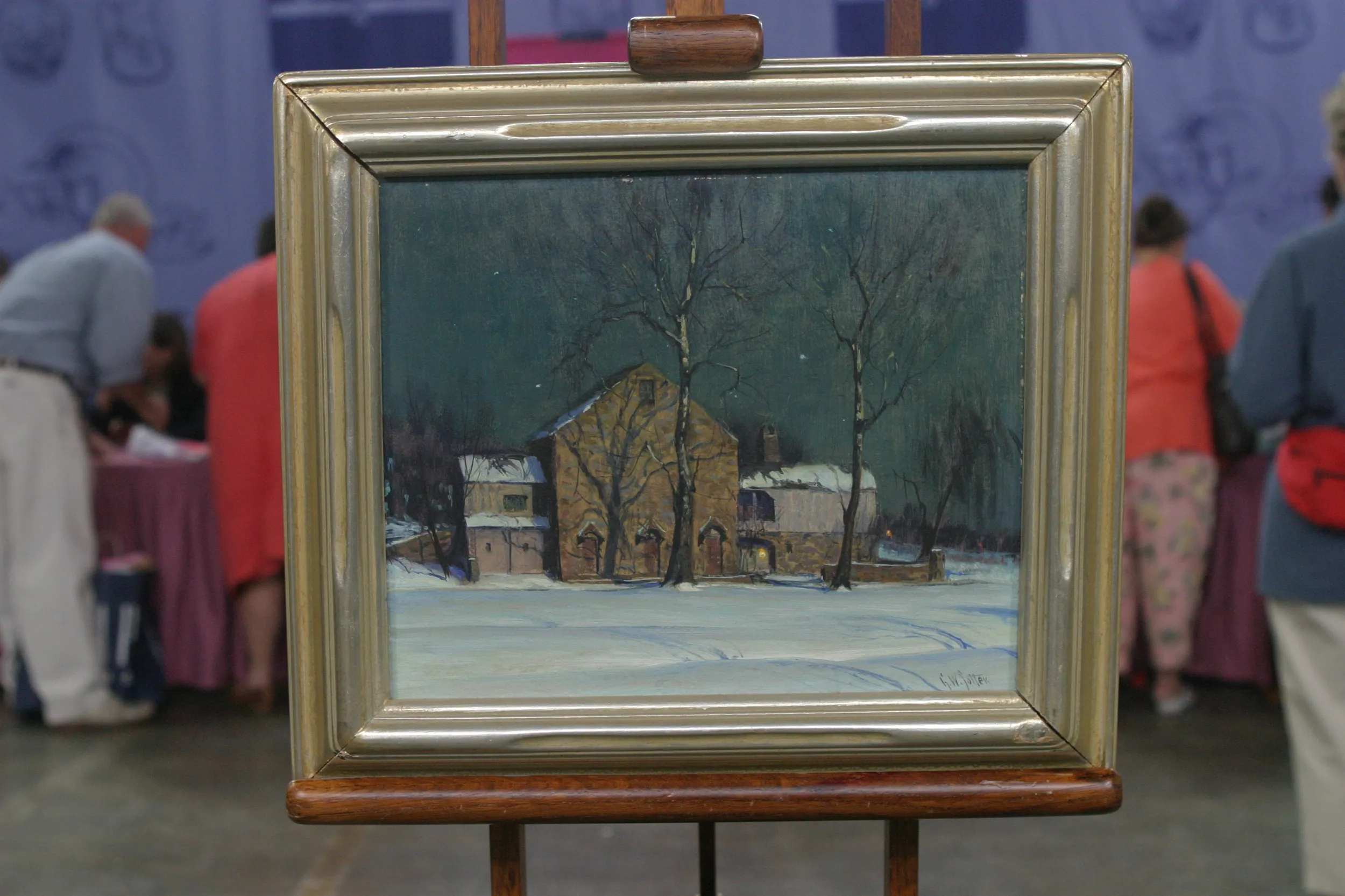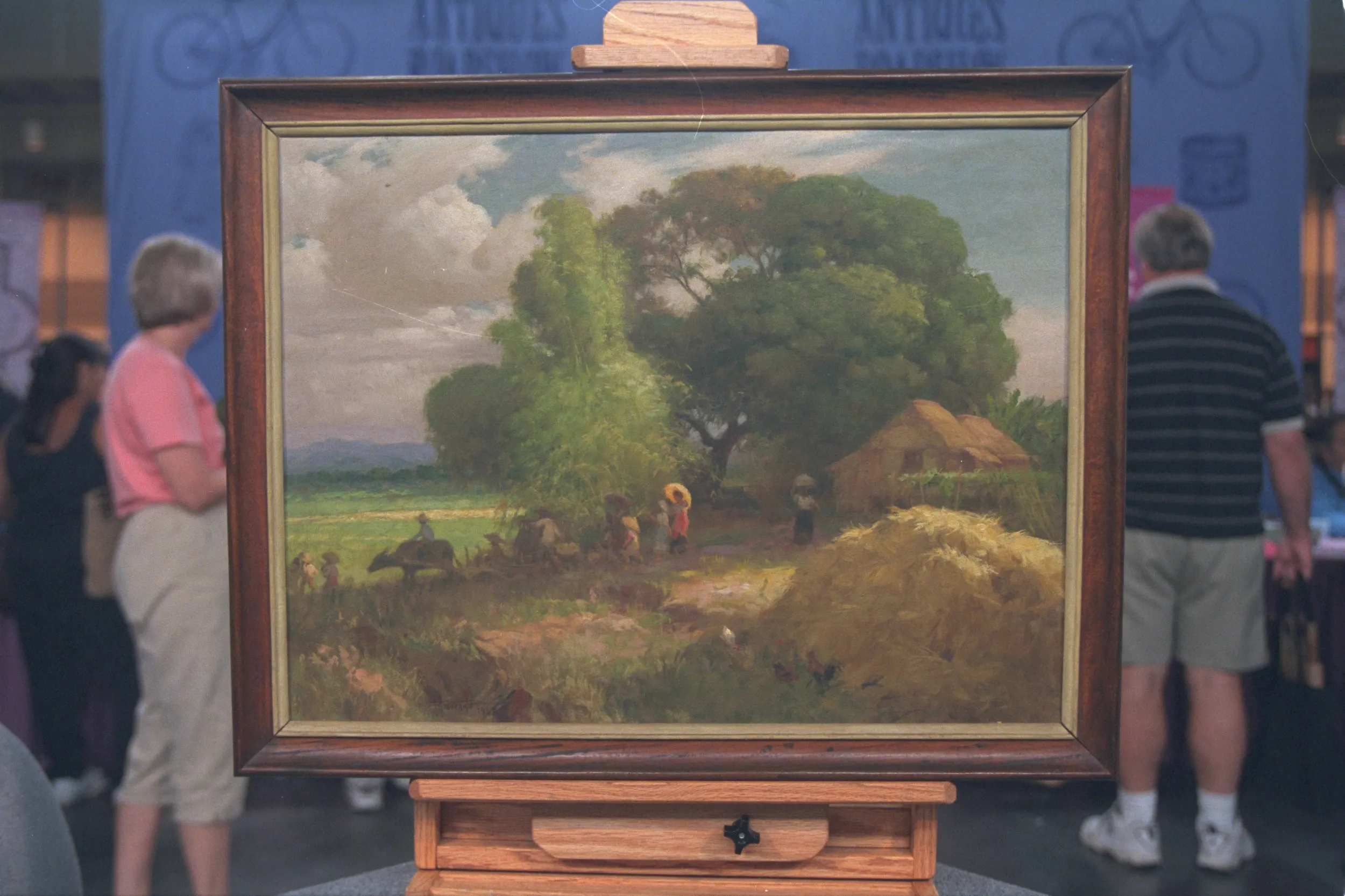GUEST: My brother-in-law bought the painting about 30 years ago, and the story is that he studied the Hudson River Valley artists for quite some time, and went to New York, and went to a gallery and asked to buy a Hudson River Valley painting. And the gallery owner said he didn't have any. And in fact, the only one he knew of was in a home in the hills in New York. And if you knew my brother-in-law, you'd know that he would be able to get any kind of story out of anybody. So he got his name and his address from the gallery owner and went to his home.
APPRAISER: Went to the owner's home.
GUEST: The owner's home. And they sat and conversed for many hours before he could talk him into finally selling him the painting.
APPRAISER: Jasper Cropsey is one of the premier Hudson River School painters. He was born in 1823 and died in 1900. His early work was more influenced by Thomas Cole. His later work was more influenced by Frederic Church. He also had a lot of pals in the Hudson River School, like Sanford Gifford and John Frederick Kensett. They traveled a lot to Europe. Cropsey was in England a good bit, as well as in Italy. Now, of course, he painted in the United States in the Hudson River area. But like most of the other artists, he also traveled around a bit. And so he painted in the White Mountains of New Hampshire, Newport, Rhode Island, and in an area called Greenwood Lake.
GUEST: Oh.
APPRAISER: And this is actually Greenwood Lake.
GUEST: Oh!
APPRAISER: Which is a natural lake located on the borders of New Jersey and New York. It was one of his favorite spots. I've seen several examples of his painting there, and this is almost identical to many of those.
GUEST: Really?
APPRAISER: Now, the painting is signed and dated. Here in the center, it's "Jasper F. Cropsey," and the date is 1881. Unlike a lot of artists, particularly more modern artists, whose work is generally better in the late period rather than the early period, Cropsey is more desirable in his earlier period. And in fact, his prime period is slightly earlier than this, it's around 1870. And the reason for that is that later on, by the 1880s, he becomes very formulaic in terms of his style. Now, what's great about your painting is that it's not one of the formulaic ones.
GUEST: Oh.
APPRAISER: You've got this wonderful contrast of moody sky and this wonderful gray contrasted with the lime greens and oranges. You also have a figure and a boat, which makes it more desirable. And, of course, you have the cluster of cows that he generally includes. Most American collectors don't like cows in their paintings, but they somehow tolerate it with Cropsey.
GUEST: (laughs)
APPRAISER: The frame is in wonderful condition and looks to be the original. In terms of the condition of the painting, looking at the back, we would find that there's Masonite, and the painting is actually oil on canvas. Masonite was not really used until 1926, but in some conservation methods earlier on, canvases were sometimes what we call laid down or glued down to Masonite.
GUEST: Oh.
APPRAISER: When you look in the area here, in particular, you see some striations, and that may be glue or adhesive residue from the back.
GUEST: Oh.
APPRAISER: It's also, uh, a little bit thin in areas, and that may be because of the compression of the canvas to the Masonite. It's, uh, a situation that can be remedied, and usually when that happens, the surface of the canvas will liven up. So I would certainly recommend doing that. Now, in terms of value, when your brother-in-law bought the picture, what did he pay?
GUEST: $7,000.
APPRAISER: Well, Hudson River School was very popular in the '70s. And today, it's, it's even more popular. It went through a down period in the '80s, but in, in today's market, it's extremely popular. And Cropsey, in particular, is very, very desirable. If this painting were offered in a gallery in New York, the selling price would probably be $300,000.
GUEST: Oh, my heavens!
APPRAISER: It's, um, amazing. (laughs)
GUEST: Oh, my gosh!
APPRAISER: It's absolutely... This is fresh to the market. You've owned it for so long, or your family's owned it for so long, and it's, it's really got all the right ingredients. The cost of restoration like this probably would be somewhere in the range of maybe $2,000, $2,500, something like that. But it certainly, given the value of the painting, it's well worth it. And I actually think once the canvas would come off the Masonite, the value could be even a bit higher. It could be up to maybe $350,000.
GUEST: That's just wonderful. I wish he were here.
APPRAISER: Yeah, yeah. Well, he would be pleased to know how things have progressed.
GUEST: Right, that's right.
APPRAISER: And how it's been-- he had such great taste.
GUEST: Exactly.


